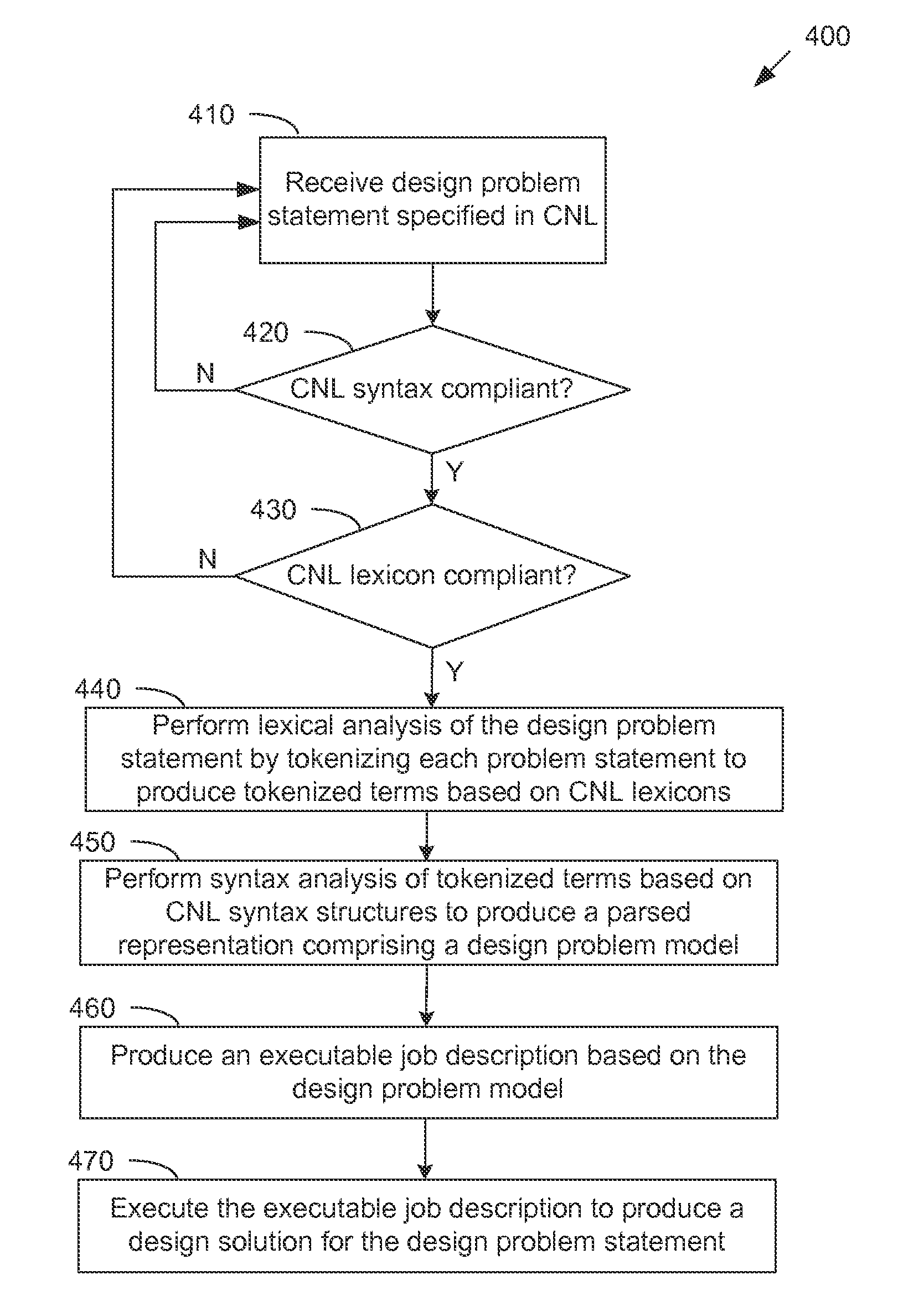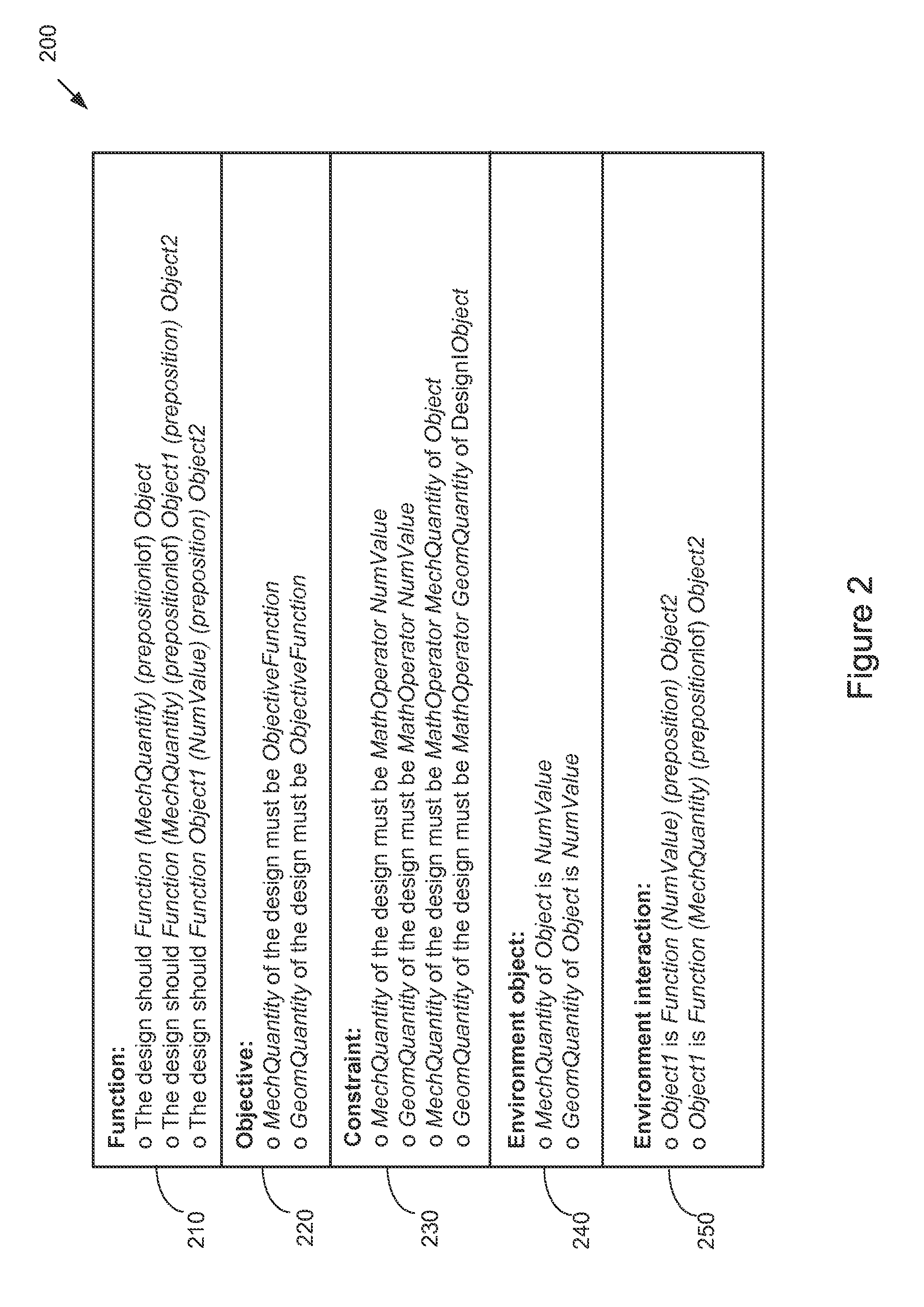Techniques for using controlled natural language to capture design intent for computer-aided design
a natural language and design technology, applied in the field of computer science, can solve the problems of designers having to thoroughly understand, design solutions must be generated by designers in advance, and requirements can be quite challenging for designers
- Summary
- Abstract
- Description
- Claims
- Application Information
AI Technical Summary
Benefits of technology
Problems solved by technology
Method used
Image
Examples
Embodiment Construction
[0033]In the following description, numerous specific details are set forth to provide a more thorough understanding of the present invention. However, it will be apparent to one of skill in the art that the present invention may be practiced without one or more of these specific details. In other instances, well-known features have not been described in order to avoid obscuring the present invention.
[0034]FIG. 1 illustrates a system 100 configured to implement one or more aspects of the present invention. As shown, the system 100 includes, without limitation, a computing device 110 coupled to a database 170. Computing device 110 may be a server system, client system, workstation, a laptop computer, a tablet or hand-held device, or any other type of computing device. The system 100 may comprise a computer-aided design (CAD) system.
[0035]Computing device 110 includes one or more processing units 120 coupled to input / output (I / O) devices 130 and to memory unit 125. Processing unit(s) ...
PUM
 Login to View More
Login to View More Abstract
Description
Claims
Application Information
 Login to View More
Login to View More - R&D
- Intellectual Property
- Life Sciences
- Materials
- Tech Scout
- Unparalleled Data Quality
- Higher Quality Content
- 60% Fewer Hallucinations
Browse by: Latest US Patents, China's latest patents, Technical Efficacy Thesaurus, Application Domain, Technology Topic, Popular Technical Reports.
© 2025 PatSnap. All rights reserved.Legal|Privacy policy|Modern Slavery Act Transparency Statement|Sitemap|About US| Contact US: help@patsnap.com



